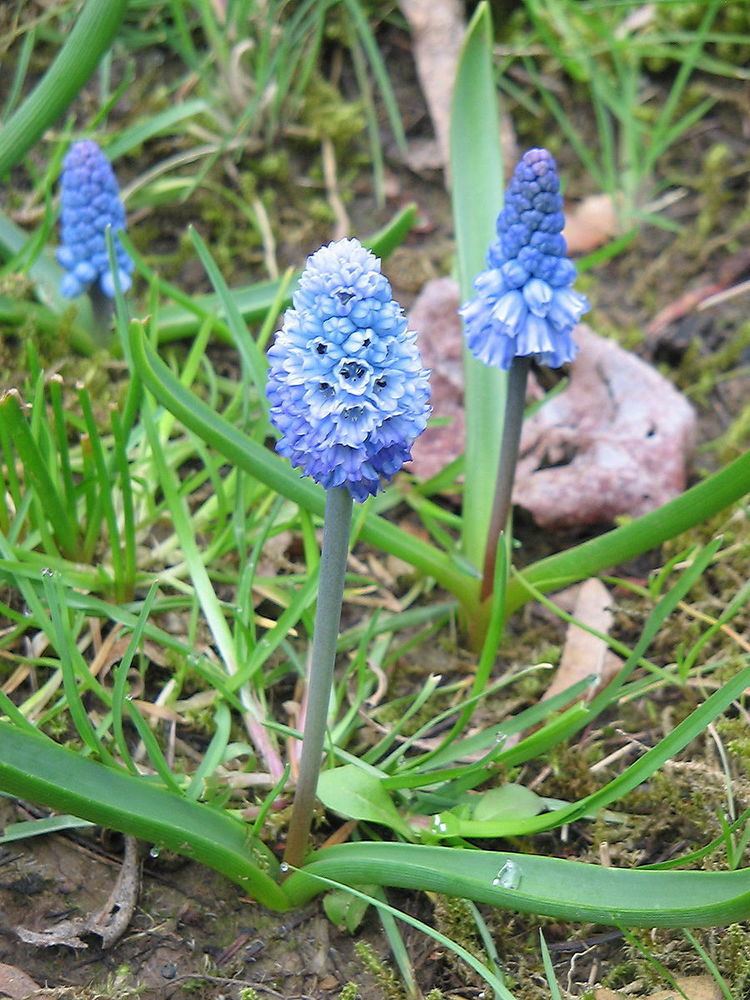Clade Monocots Rank Species | Clade Angiosperms | |
 | ||
Similar Muscari aucheri, Muscari latifolium, Muscari azureum, Muscari macrocarpum, Muscari armeniacum | ||
Pseudomuscari azureum (syn. Muscari azureum), the azure grape hyacinth, is a species of flowering plant in the family Asparagaceae, native to Turkey. A bulbous perennial, it is grown in gardens for its spring flowers. The specific epithet azureum means "bright blue", a reference to its flower colour.
Contents
Description
Pseudomuscari azureum is a small plant, around 4–15 cm (1.6–5.9 in) high with two to three grey-green leaves per bulb. Up to 60 flowers are borne in Spring (March or April in the Northern Hemisphere) in a dense "spike" (raceme). Each flower is 4–5 mm (0.16–0.20 in) long and bright blue in colour with a darker stripe along each of the lobes. A feature which distinguishes the genus Pseudomuscari from the related Muscari is that the mouth of the flower is not narrowed but forms an open bell-shape. It grows in alpine meadows in north and east Turkey.
Cultivation
P. azureum may be found in horticultural sources under the illegitimate name Hyacinthus azureus. It is still widely referenced under its previous name Muscari azureum. The species is popular as a spring-flowering bulb; Brian Mathew describes it as "a delightful plant" for use in rock gardens or underneath shrubs. It is frost-hardy and should be grown in full sun. It has gained the Royal Horticultural Society's Award of Garden Merit. There is a white cultivar, 'Album'.
